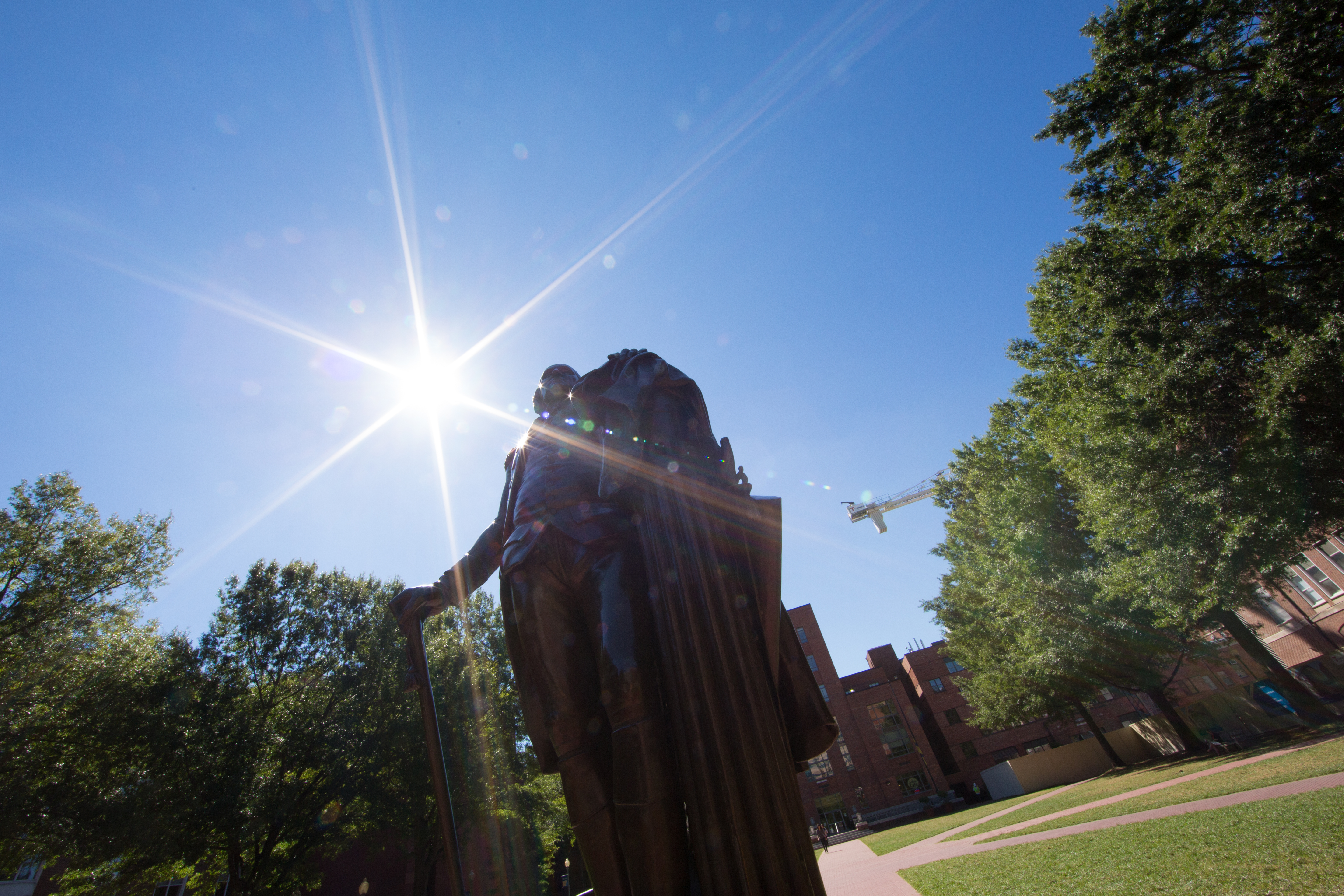If the roof of a house was on fire 15 years ago, typically a firefighter would cut the electric, climb up to the roof, punch in a hole and start pouring water on the fire, according to Amit Ronen, director of the George Washington University Solar Institute.
But today, a firefighter might encounter a solar panel on a flaming rooftop, Mr. Ronen said. Would that first responder know how to react?
With one million solar installations in America—many of which are residential— firefighters and other professionals need a new set of skills and training focused on understanding solar energy.
In response, the GW Solar Institute is partnering with GW Planet Forward and the National Renewable Energy Laboratory (NREL) to create educational multimedia materials about solar energy that will fill those gaps in knowledge. The project is funded by a competitive, two-year, $430,000 award from the U.S. Department of Energy SunShot Initiative.
“As solar installations become more popular, firefighters, real estate agents, financiers and appraisers need to understand how solar energy and solar installations work,” Mr. Ronen said.
“We know our target audiences are super busy and don’t have the time or patience to sit through a day long training, so our goal is to use cutting-edge multimedia tools that will provide them with concise information in accessible and entertaining formats.”
The GW Solar Institute is a part of the GW Sustainability Collaborative, whose mission includes educating the public about energy and environmental issues, Mr. Ronen said.
The DOE's SunShot Initiative the also includes Solar Training and Education for Professionals (STEP), a $10 million program to train and educate the growing number of professionals who work with solar energy, such as the Solar Ready Vets program which connects U.S. military veterans with careers in the solar industry.
The educational series will feature five types of videos including traditional webinars and “explainer videos” that use graphics and a voice over to communicate a concept. Other videos will model the format of popular television shows such as the investigative journalism showcased on “60 Minutes” and the instructional home improvement offered by “This Old House.”
GW Solar Institute experts will conduct surveys to determine topic areas and develop concepts and write scripts with support from NREL. Planet Forward will lend expertise in journalism, new media, production and editorial to create the content. GW students will take a hands-on role in developing video content, interviewing experts and post-production.
The series will be available to the public, and videos will be released and archived on the GW Solar Institute website.
"Storytelling can have immense impact to communicate information, best practices and the excitement of innovation,” Planet Forward founder and School of Media and Public Affairs Director Frank Sesno said in a press release.
“Nowhere is this more apparent than in the story of solar, which is changing the energy landscape.”
Mr. Ronen said that the need for a series of this kind is linked to the nearly 80 percent drop in price of solar panels in the last five years. With prices at a record low, more professionals need training in solar energy. For example, firefighters might need to learn new safety measures and real estate agents will need an understanding of how solar installations affect the value of a property.
Lack of knowledge about solar energy is another significant soft cost because uncertainty around safety procedures, maintenance, permitting, valuation and other processes before, during and after installation, causes friction that has slowed or stopped many projects.
“If we can educate and train more professionals about solar energy, we can help cut down on those soft costs and make solar power an increasingly affordable alternative to polluting fossil fuels.”


